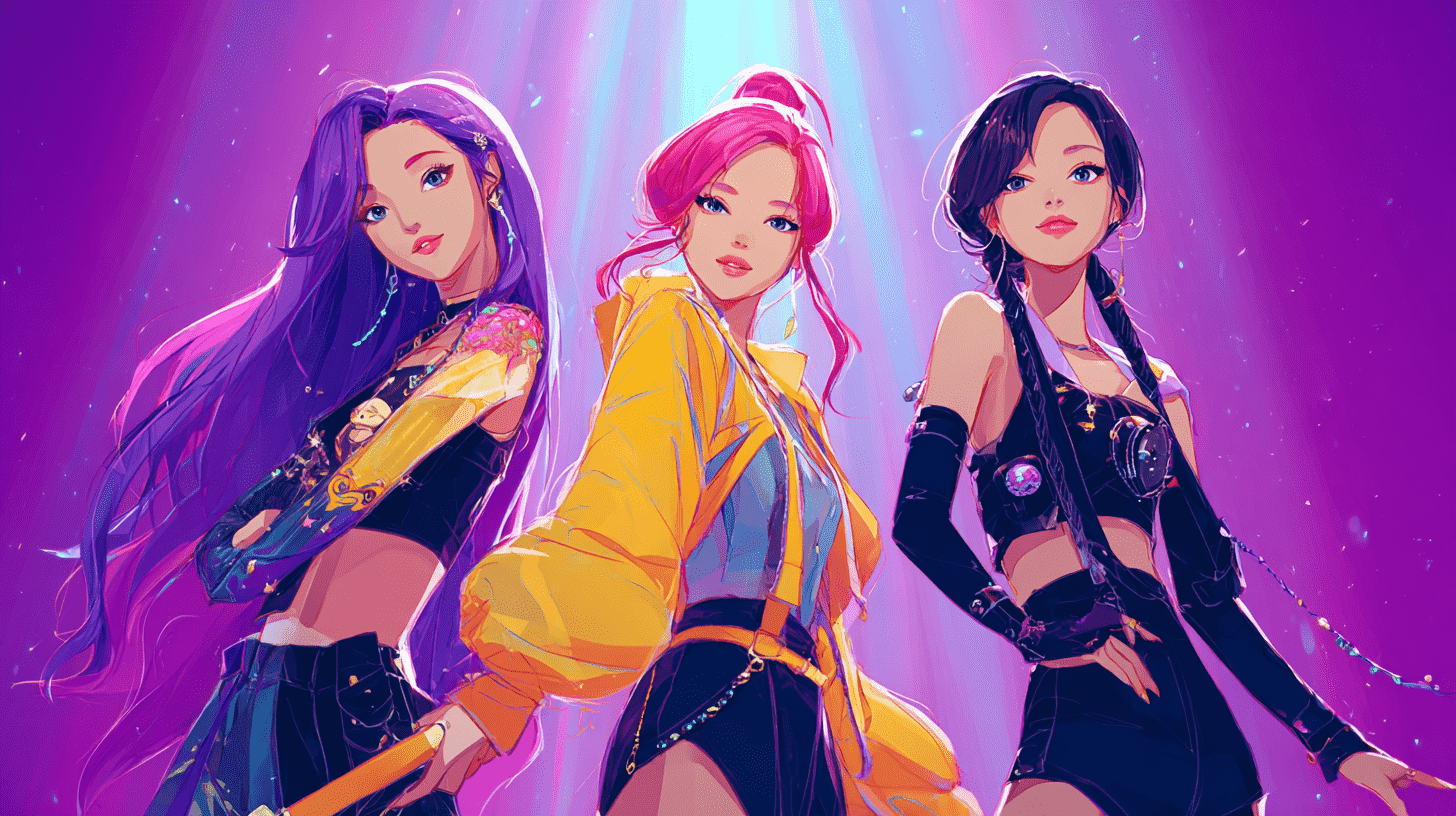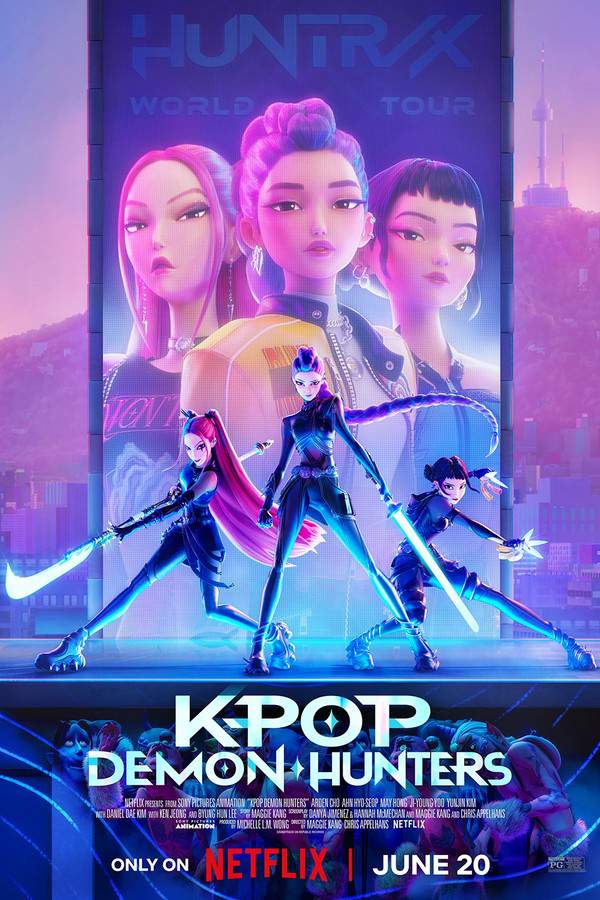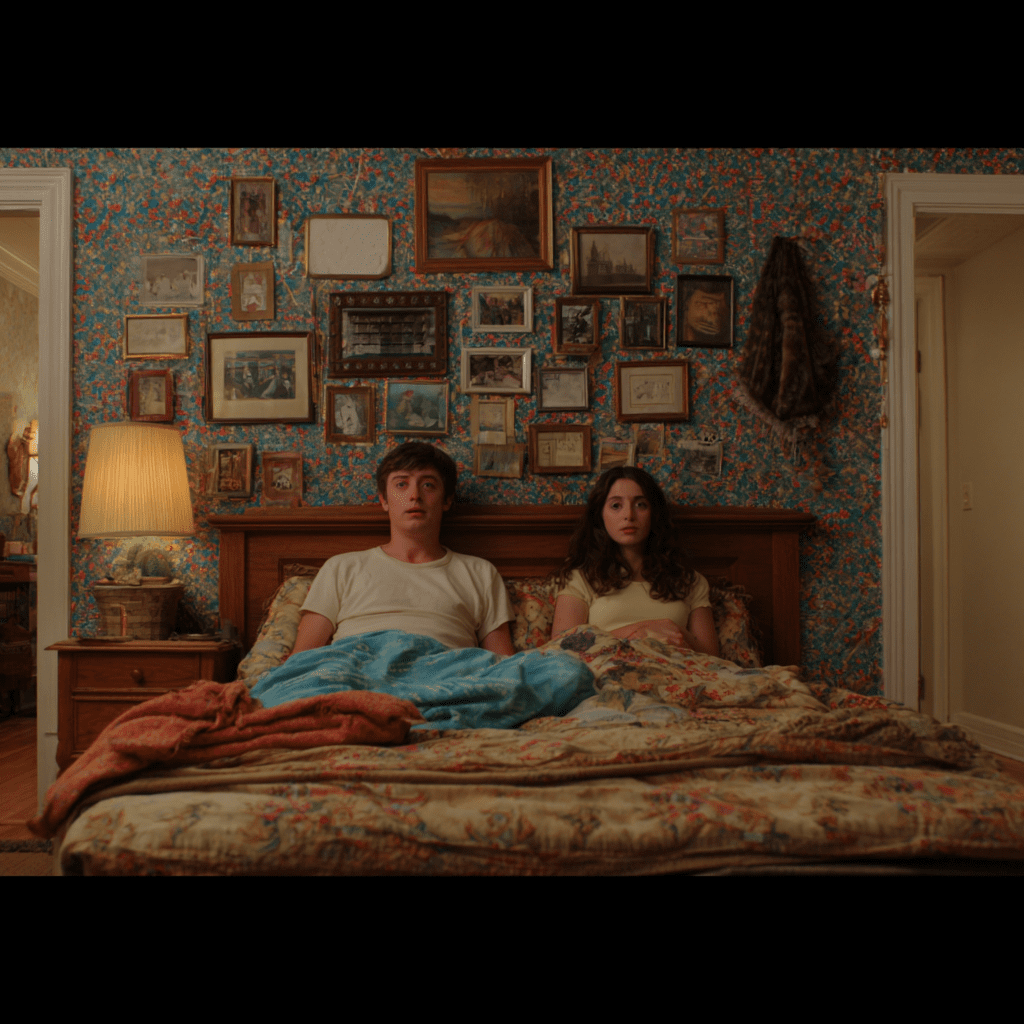What's After the Blog?
Reviews
K-Pop Demon Hunters (2025) Review: A High-Energy Musical Action Ride
Dive into our review of Netflix’s animated hit K-Pop Demon Hunters—where catchy K-pop anthems collide with supernatural battles. We explore its vibrant animation, emotional depth, and where its fast pace both soars and stumbles.
July 4, 2025

Movies mentioned in this article
K-Pop Demon Hunters (2025) Review: A High-Energy Musical Action Ride
Quick take: K-Pop Demon Hunters delivers ninety-nine minutes of neon spectacle, razor-sharp fight choreography, and radio-ready earworms. It dazzles first, then surprises with genuine heart—even if its breathless pace occasionally slices away more story than some viewers might like.
What Is K-Pop Demon Hunters About?
Sony Pictures Animation plants us in present-day Seoul, where the globally adored girl group Huntrix—composed of lead vocalist Rumi, powerhouse dancer Mira, and bubbly rapper-lyricist Zoey—juggles two wildly different careers. By daylight they dominate music charts, greet screaming fans, and perfect intricate choreography. After dark, however, the trio trades in-ears for enchanted weapons, standing between humanity and the demon king Gwi-Ma. They fight not only with blades but with song, because the adoration of Huntrix’s fandom fuels a protective barrier called the Golden Honmoon. Gwi-Ma launches a wickedly clever counterattack by forming an impossibly handsome demon boy band, the Saja Boys, whose own concerts siphon fan energy to feed his army. Romantic sparks, identity crises, and stadium-size showdowns ensue.
A Visual Style That Pushes the Medium Forward
Since Spider-Man: Into the Spider-Verse, Sony Pictures Animation has championed bold, hybrid aesthetics, and K-Pop Demon Hunters may be the studio’s most gleeful experiment yet. Characters are rendered with sleek CG volumes, yet their outlines pop with ink-like strokes borrowed from Korean webtoons and manhwa. Instead of smoothing every motion, directors Maggie Kang and Chris Appelhans freeze action on striking key poses—moments that mimic those breath-stealing snapshots K-pop fans capture at concerts. During battles the camera barrels through splashes of electric pinks and purples, then settles just long enough for a playful emoji-style sight gag. The film is essentially a music video stitched to a Saturday-morning action serial, and it never lets the audience forget how exhilarating animation can be when it refuses realism in favor of impressionistic rhythm.
K-Pop Bangers That Earn Their Plot Beats
A movie about idol culture lives or dies by its soundtrack, and here the twelve original tracks do more than fill silence; they articulate theme and escalate stakes. Early hit “How It’s Done” establishes Huntrix’s dominance with a sugary hook that later becomes a leitmotif for sisterhood. Mid-film anthem “Golden” lands during a Seoul Dome concert so spectacular the stadium lights synchronize with Rumi’s sword strikes. The climactic duet “Free,” sung in intertwined English and Korean verses, crystallizes the film’s message about self-acceptance while literally shattering the demons’ illusion spell. Because fight choreography morphs out of dance breaks, the movie sidesteps the awkward start-stop rhythm that plagues many film musicals; here, narrative, choreography, and combat are the same exhilarating movement.
Themes of Identity, Perfectionism, and Fandom Power
Beneath its bubble-gum surface, the story probes Korea’s intense beauty standards and the exhausting work of projecting perfection. Protagonist Rumi hides the violet demon markings on her skin with stage makeup, believing she must purge that “flaw” by defeating Gwi-Ma. Her mentor Celine, shaped by her own trauma, reinforces the idea that only eradication—never reconciliation—can bring peace. The plot gradually dismantles that belief. When Rumi confesses her lineage to Mira and Zoey, their hurt stems not from the truth itself but from being shut out. Their eventual public solidarity turns the fans’ adoration into collective power: raised light-sticks channel energy into the Honmoon, proving that community, not secrecy, is what keeps darkness at bay. It is a refreshingly nuanced message for a family film, delivered without pedantry.
Where the Movie Shines and Where It Wobbles
The film’s greatest strength—its relentless forward momentum—can also be a weakness. Exposition rockets by in the opening fifteen minutes, which means supporting players like Celine and the mischievous tiger-demon sidekick feel thin next to our vividly drawn heroines. Viewers who crave hard fantasy rules may find the mechanics of the Honmoon or Huntrix’s superhuman agility hand-waved with a wink. Finally, the PG rating dilutes peril; demon bodies burst into confetti the instant a blade lands, a delightful gag that nonetheless robs confrontations of lasting menace. Yet these quibbles rarely linger because another gorgeously lit set piece, heartfelt confession, or laugh-out-loud visual pun is always seconds away.
Final Verdict
Even if you have never streamed a BLACKPINK video or memorized a single light-stick color code, K-Pop Demon Hunters is easy to love. It sings the praises of art as resistance, friendship as chosen family, and fandom as a force capable of banishing literal demons. Bursting with confidence and cultural specificity, the film stands proudly alongside Sony’s loftiest animated achievements, even if it occasionally trades depth for decibels. I left the screening humming “Golden,” longing for a Huntrix world tour, and quietly hoping Netflix green-lights a sequel before the confetti settles.
Where to Continue the Obsession
If you’re ready for round two, K-Pop Demon Hunters is streaming worldwide on Netflix. Our dedicated movie page on What’s After the Movie offers a detailed summary, theme quizzes, holistic reviews, and convenient links to more movie insights. You can browse more articles like this one on the official blog, where we dive deep into endings, behind-the-scenes trivia, and box-office performance.
For score comparisons and alternate reviews, check out the film’s listings on Rotten Tomatoes, Metacritic, IMDb, TMDB, Wikipedia, JustWatch, Letterboxd, and Fandango.
If Huntrix really does embark on a “comeback stage,” you can bet What’s After the Movie will be front-row center, light-stick in hand, ready to sing along.
Continue reading

What's After the Movie?
Not sure whether to stay after the credits? Find out!
Explore Our Movie Platform
New Movie Releases (2025)
Famous Movie Actors
Top Film Production Studios
Movie Plot Summaries & Endings
Major Movie Awards & Winners
Best Concert Films & Music Documentaries
© 2025 What's After the Movie. All rights reserved.







